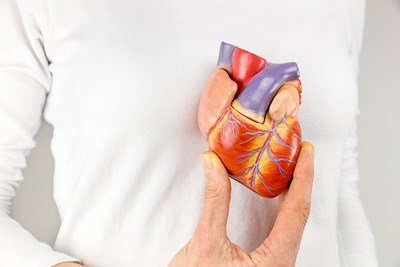Coronary artery disease (CAD), also called atherosclerotic heart disease, results from the presence of plaque in the coronary arteries. It makes blood flow less efficient, reducing the amount of oxygen-rich blood that reaches the heart (a condition called “ischemia”).
CAD may be present for years before you’re aware, which makes it extremely dangerous. In fact, it is the most common type of heart disease, as well as one of the most common causes of death in the United States—which makes a prompt diagnosis extremely important.
Because the first sign of coronary artery disease may be a heart attack (which, sadly, can be too late), patients who exhibit several risk factors would do well to receive appropriate testing early. The presence of angina or difficulty breathing may also prompt explorative testing. A physical exam and blood testing are usually the beginning, followed by the tests your doctor or cardiologist deems most appropriate for your situation. It can help to be informed about your options before visiting a physician.
Cardiograms
An electrocardiogram, or ECG/EKG, may be performed during an office visit. Sometimes, this is insufficient for diagnostic purposes, so holter monitoring may be necessary. For this, the patient wears an ECG designed to be portable for 24 hours, allowing your doctor a more extensive view of what your heart is doing throughout the day. The electrical signals coming from the heart are monitored and recorded and can provide evidence of where the blood being sent to the heart is insufficient.
An echocardiogram is a type of ultrasound (or sonogram) specifically for assessing heart diseases. It may be performed using a probe that sends out sound waves through the chest or as an esophageal ultrasound, in which the probe is sent down the esophagus to get closer to the heart. The sound waves the probe emits create echoes off tissues and bones and then create an image of the heart in real time on a screen. This allows doctors to see areas that aren’t moving as strongly as they ought to.
In addition to echocardiograms, magnetic resonance imaging (MRI) and computerized tomography (CT) scanning provide alternative ways to view interior tissues and blood vessels. MRIs are extremely detailed, while CT scans allow a cross sectional image of the interior tissues and muscles.
Other Testing
When symptoms appear only during physical activity, a stress test can be useful. The patient begins moderate exercise (such as walking briskly on a treadmill), and the heart can be monitored through an ECG or echocardiogram. A nuclear stress test involves injecting a radioactive substance into the bloodstream to make poor blood flow areas more obvious during the process.
Angiogram and cardiac catheterization are not only a diagnostic tool, but also a treatment option. A dye is injected into the heart’s blood vessels through a catheter in a major artery (cardiac catheterization), highlighting areas of poor blood flow or blockage. If treatment is necessary, a small balloon can be inserted through the catheter and expanded, opening the vein, followed by a piece of mesh called a “stent” that keeps the vein open to improve blood flow.



